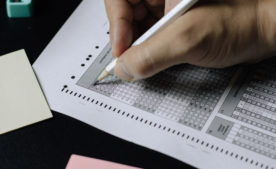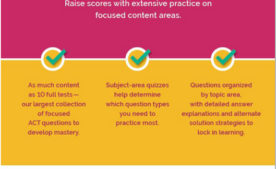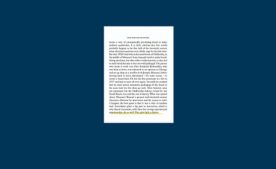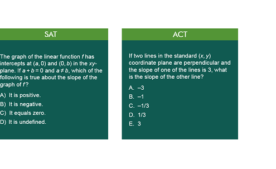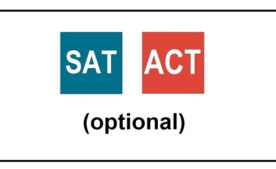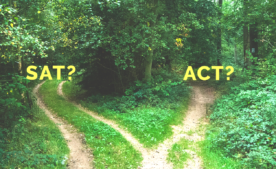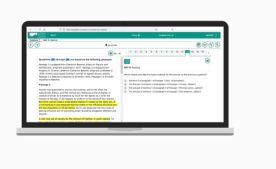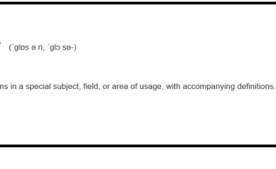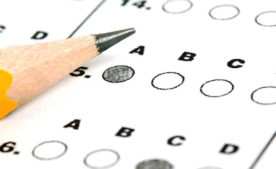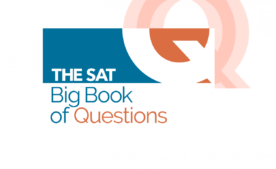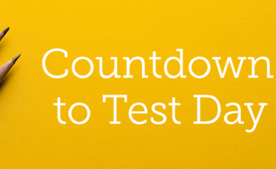Welcome to our series, What’s on the SAT. In this post, we’ll provide an overview of the SAT Writing & Language test and share SAT strategies you’ll learn and practice during your Summit tutoring program. If you are just starting out on the college admission process, please keep in mind that the best way to decide between the SAT and ACT is to take a practice test of each, then compare the scores and your test-taking experience.
Please note that the following description is for the current version of the SAT. See our other blog posts about the new digital adaptive SAT that is coming spring of 2024 for our U.S.-based students.
The Writing & Language section of the SAT assesses students’ ability to evaluate and revise four essay-style passages. Each passage is an essay about 400-450 words long. The complexity is designed for the average writing level of students in 9th grade through college.
The Writing & Language section is always second, following the Reading portion. It’s 35 minutes long and has 44 questions, with 11 questions scattered throughout each passage. This means students have an average of 47 seconds per question, but keep in mind that some questions will be quick and easy (like correcting basic grammatical errors) while others will require more time for thought (such as identifying the main idea of the passage).
QUESTION TYPES
The questions fall into two main categories: Standard English Conventions and Expression of Ideas.
The Standard English Conventions category covers classic grammar questions, addressing the nitty-gritty details of punctuation, sentence structure, and parts of speech. Many students report that their high school English classes have not spent much time on grammar, or that the grammar instruction they did have was a long time ago. This is where one-on-one tutoring is especially helpful: in each session, your Summit tutor tailors the content and pacing to your needs. You may have a strong grip on apostrophe usage but feel less confident about commas. Your tutor works with you to identify strengths as well as areas you need to brush up on and helps you prepare accordingly.
Expression of Ideas questions are more about the author’s choices. You might be given four words that are synonyms in some contexts but not in others and asked to pick the one that’s appropriate for the sentence. Expression of Ideas questions also cover style, which can take some time and practice to get used to. Keep in mind that the SAT is not looking for the most elegant or artistic option, but rather the single correct answer. There must be something wrong with three of the four answer choices—your tutor knows how to help you get into the test-makers’ heads and get a sense of what they’re looking for. It’s important to make sure you feel confident about the reasoning behind the right and wrong answers before you take the official test.
Because Expression of Ideas questions ask students to put themselves in the writer’s shoes, you also get questions about the author’s main idea, intent, and purpose. Many students find these challenging at first, due to their subjective viewpoint. In your Summit tutoring program, you’ll gain the perspective to see these questions as black-and-white with one clear right answer.
The Expression of Ideas category does include one question type that is undeniably objective: data graphics questions. These will ask students to choose the wording that accurately reflects quantitative information presented in a graph or chart that accompanies the passage. Although data questions are very literal, they can still be tricky because the test-makers are very good at devising “attractors,” plausible options meant to trap incautious test-takers. Your Summit tutor will help you get familiar with the red flags to look for when ruling out answer choices.
The Writing & Language section always includes one passage each on the subject of careers, history or social studies, humanities, and science. Unlike on the SAT Reading section, the topic doesn’t tend to matter much here because the questions are more about writing skills and mechanics than reading comprehension. In fact, many of the Writing & Language questions could be answered without context, but it’s a good idea to read the whole passage. Some questions require you to catch redundancies that you might miss if you don’t read thoroughly, and, of course, questions about the main idea will require a sense of the essay as a whole.
Strategies for the SAT Writing & Language Section
Answer the questions as you go – The Writing & Language section instructions suggest that you should read the passage through once before tackling the questions. We do not recommend following this advice: it would be too time-consuming for most students. Even if you have time to spare, reading the passage in advance is probably unnecessary. Most people are comfortable answering the questions as they appear on a first read (and doubling back for anything tricky they had to skip).
Shorter is often better – The SAT is looking for writing that is clear and concise, in that order. Clarity is the top priority, so a wordier option would certainly be best if it is also clearest. However, if you find yourself torn between answer choices that seem to be conveying the same information, go with the shortest.
Rely on rules, not your ear – Standard written English is often more formal than what we’d say aloud, and some technically incorrect phrasing is not only commonly heard but also perfectly clear in meaning. It’s not enough for a sentence to leave no room for misinterpretation. The SAT Writing & Language section requires you to be very exact, which means knowing your grammar rules.
How the Writing & Language Section Impacts Your SAT Score
The SAT Writing & Language section accounts for half of your Evidence-Based Reading and Writing Score (commonly known as your “verbal score”), which is out of 800. The Reading and Writing & Language sections are weighted equally, even though the Reading section takes longer and has more questions. Because many students find timing less challenging on the Writing & Language section, and because it tends to feel more clear-cut and consistent than the Reading, this is often a good area to target in increasing your SAT and super scores. Of course, if you have a strong preference between the two verbal sections, you may want to consider leaning into the one you prefer to capitalize on your skills.
TAKE A FREE PRACTICE SAT
STUDENTS CAN TAKE OUR PROCTORED PRACTICE TESTS IN-PERSON OR REMOTELY.
As a complimentary service, Summit offers free proctored practice tests and a no-obligation consultation to analyze the Score results in detail and provide guidance on your testing plan. Taking practice tests under realistic conditions gives students exposure to the test question types and pacing in a no-risk environment.
Questions? Contact us at 1-800-MY-TUTOR or info@mytutor.com.
View schedule



